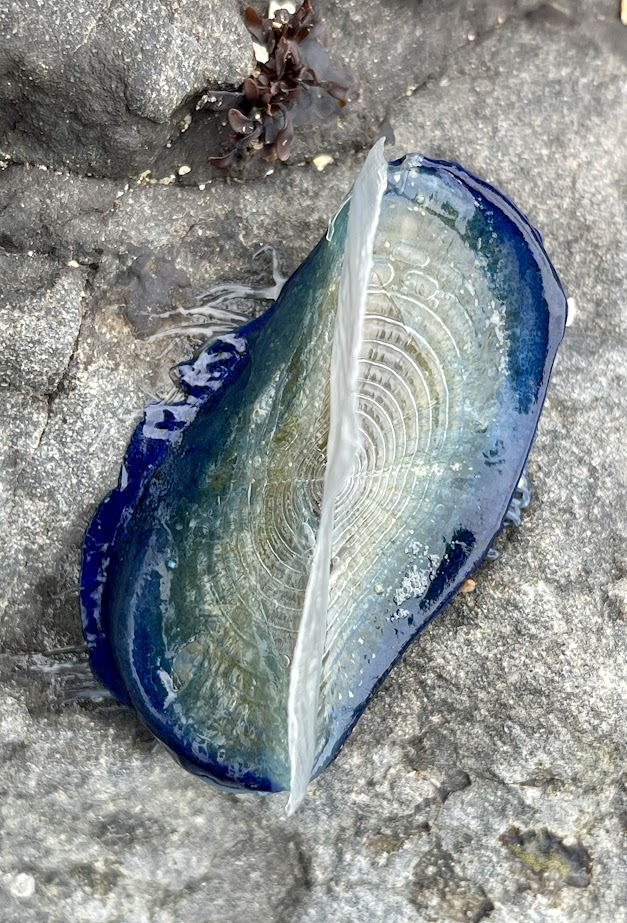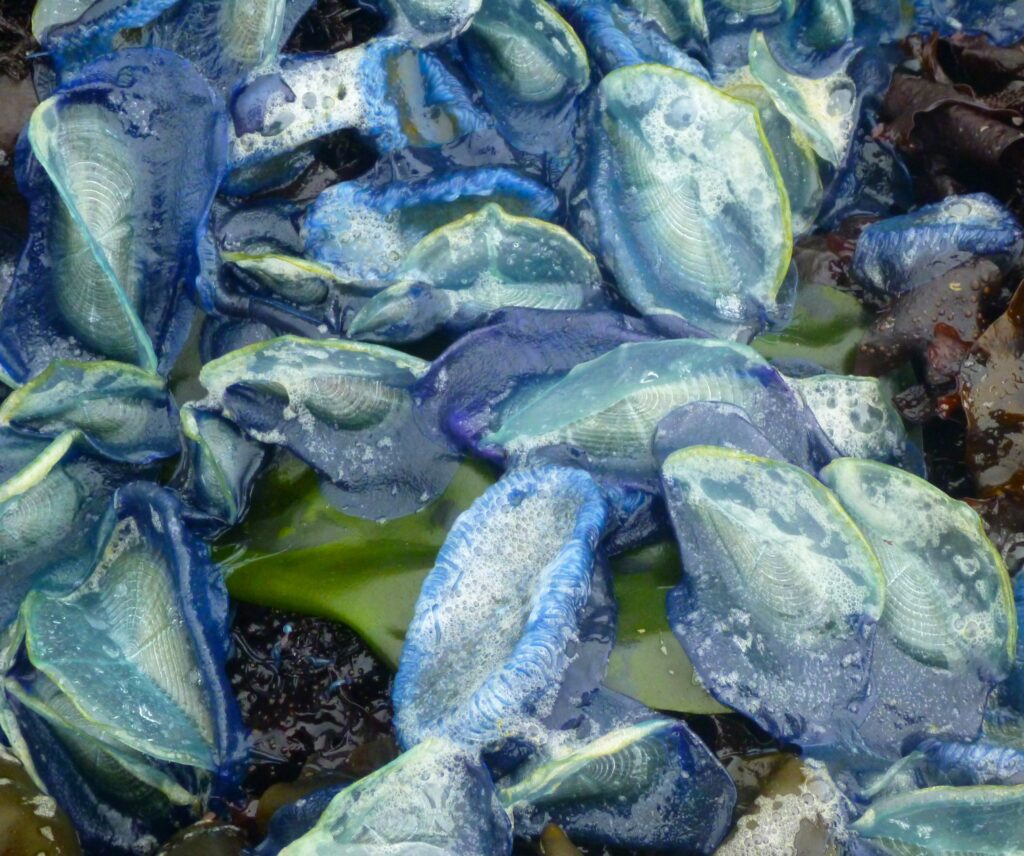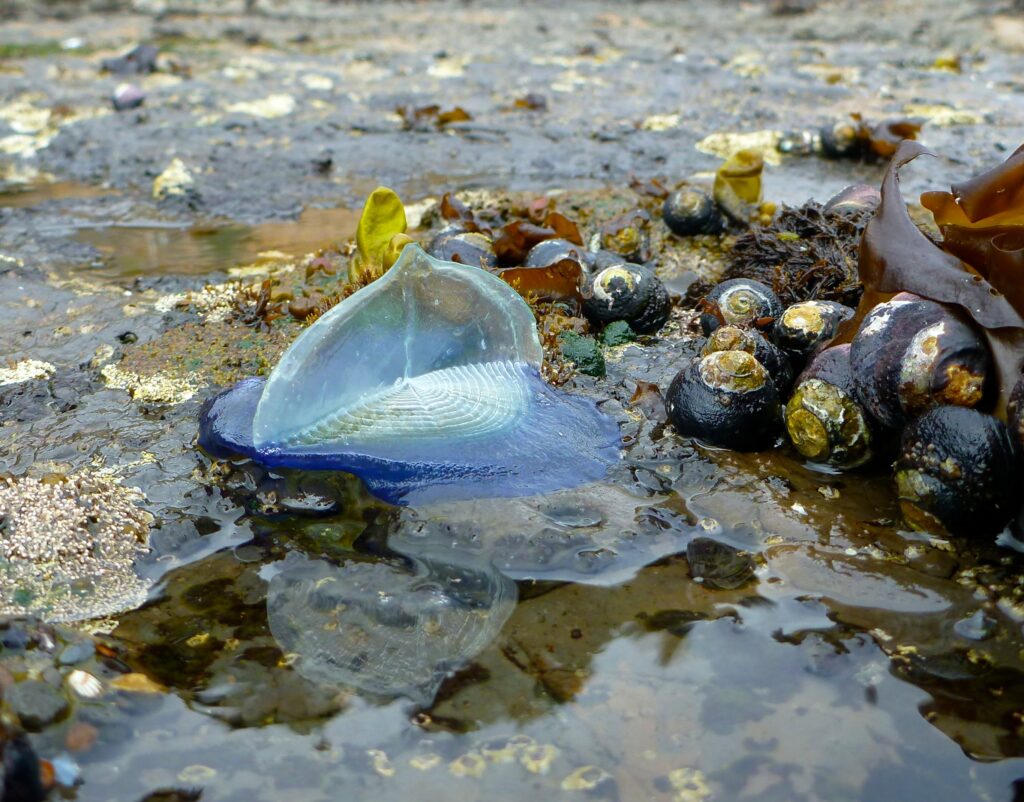The Blue Beaches of Spring
by Debbie Rogers
One of the most astounding and beautiful sights at the tide pools is a sometimes ankle- deep blanket of blue brought by the westerly winds in late spring or early summer. This glossy, iridescent blue cover may envelop the entire beach area and is comprised of millions upon millions of Velella velella, By-the-Wind Sailors. It’s a mesmerizing sight to behold.

Someone observing this for the first time may think the beach is covered with blue cellophane. A closer look reveals the great multitudes of animals whose misfortune it was to be pushed ashore by the wind and washed up on the reef and sand.
Velefla velella are part of the phylum Cnidaria, related to sea anemones, corals and jellies. They are carnivores and feed on fish eggs, copepods and zooplankton. Although they are close relatives of the Portuguese Man-of-War, which gives dangerously painful stings, Velella velella do not pose a stinging threat to people.
These creatures are floating (pelagic) colonies of hydroids, often mistakenly referred to as jellies. They spend their lifetime drifting and floating great distances in the open sea. They have no means of guiding themselves but have little sails, about an inch tall, of transparent material similar to the chitin that makes up our fingernails. This sail, mounted on top of a gelatinous, elliptical float which grows to about four inches long, catches the wind and propels the colony through the water in search of food. The little tentacles which cover the underside of the float are individual creatures hanging down into the water.

These little tentacles, also called hydranths or polyps, have specialized jobs. A large polyp in the center distributes the digested food, while other polyps specialize in reproduction. Like anemones, Velella velella reproduce by budding off medusae which become free-swimming animals that act like little jellies. Eventually, these medusae release gametes into the sea, which combine and produce swimming larvae that eventually become a new colony.Velella velella that have recently washed up on the beach are in their colorful blue glory and feel very slimy and slippery to the touch because they still have their soft tissues and tentacles intact. Those that are still alive can be seen floating and sailing around the tide pools, held aloft by gas chambers in their structure. Others lie in great heaps on the sand and reef.

Within a few days after the initial stranding, the soft tissue either decomposes or is consumed by tide pool carnivores. Sea anemones have been known to experience great growth spurts during Velella velella strandings! This natural recycling can cause quite a stench. All that remains of the unfortunate colonies after these first few days is the transparent, plastic-looking “skeleton.” Eventually, all the little skeletons will be washed from the beach and returned to the sea. The following year, in the late spring when the westerly winds blow again, the cycle will repeat itself. Giant ribbons of blue, which when observed from the air look like an oil spill, will return to the San Mateo coast, and once again the beaches will be covered by the vibrant blue Velella velella blanket.
